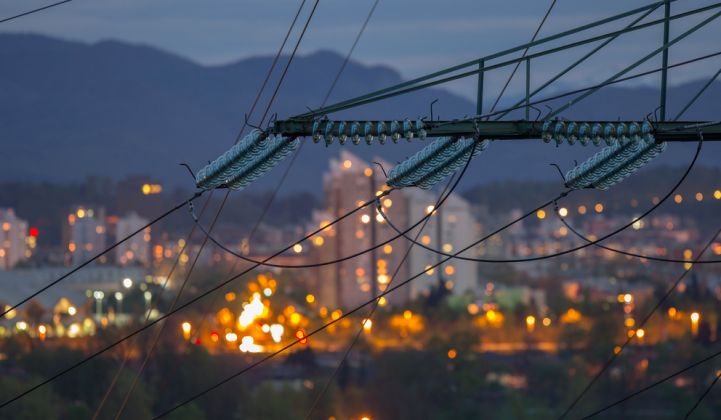DNV GL expects global grid capacity to triple by 2050 as electricity network operators fight to cope with a surge in electric vehicles and renewables.
The quality assurance and risk management giant said the electrification of energy demand would double by 2050 as transportation, buildings and manufacturing all increasingly go electric. Installation rates for distribution system transformers will double.
By 2027, half of all new car sales in Europe are expected to be electric vehicles, DNV GL said. The company’s latest Energy Transition Outlook also predicted 80 percent of global electricity production will come from renewables by 2050.
A growing fraction of wind and solar power on the grid will force many countries to redesign the way electricity markets work, bringing in market-based pricing signals to encourage greater flexibility.
One problem that markets will need to overcome is how to reward renewable generation when large amounts of it cause wholesale energy prices to plummet.
“To speed up the transition, regulators and politicians need to rethink electricity markets to provide additional flexibility including storage, demand-side response and interconnection capacity,” said DNV GL in a press release.
In higher latitudes, including northern Europe, North America and Greater China, policymakers will need to find ways of dealing with both short-term and seasonal variations in renewable output.
This could likely be achieved by using surplus renewable electricity to produce hydrogen or other fuels, according to DNV GL. Meanwhile, fossil-fueled plants will increasingly take on peaking roles.
Having to deal with bigger grids will complicate matters for system operators. But that will not necessarily make energy more expensive.
Although absolute energy expenditure will grow by 30 percent up to 2050, rising to $6 trillion a year, most of this will shift from operational or fuel costs to capital expenses.
As a share of global gross domestic product, energy expenditure will fall 44 percent, from 5.5 percent to 3.1 percent. From 2030 onward, the bulk of capital expenditures on energy will switch from fossil-fuel projects to electricity grids and wind and solar plants, DNV GL said.
At the same time, the growth in final demand for energy will start to slow. By the mid-2030s, DNV GL estimates, global energy demand will peak at around 17 percent above 2016 levels.
After then, slowing population and productivity growth, combined with more efficient energy use in areas such as transportation, will see demand falling slowly toward 2050. Primary energy supply will also peak in the 2030s, DNV GL said.
By 2050, the amount of oil and coal in the energy mix will have more than halved from today’s levels. The energy supply mix will be split evenly between renewable and non-renewable sources. Solar PV will dominate renewable production, followed by onshore wind and hydro.
The DNV GL report noted that oil majors are already trying to lead in this shift, by investing in EV charging networks and other clean energy ventures. This is putting the oil companies in competition with electricity utilities. “These trends will continue,” states the report.
Elsewhere, though, new players could enter the energy market, for example from the technology or engineering sectors.
“Business model changes may cause significant shifts in demand for products, and therefore for energy, as some sectors of the economy move from ownership to service ‘pay-as-you-use’ models,” said DNV GL.
However, this rapid progress toward electrification won’t be enough to meet the decarbonization goals set by the Paris climate agreement, the Energy Transition Outlook warned.
“The first emission-free year will be 2090, if the energy transition continues at the pace predicted in this report,” said the organization.
It is likely that the rapid transition to a more electric energy system could create pain for some actors. “The timescales involved in planning and constructing electricity networks may require network operators to make decisions amid considerable uncertainty,” DNV GL said.
“Regulators will need to make decisions about the optimum allocation of the risks and associated costs of stranded assets. Large thermal generators will face considerably increased uncertainty.”




